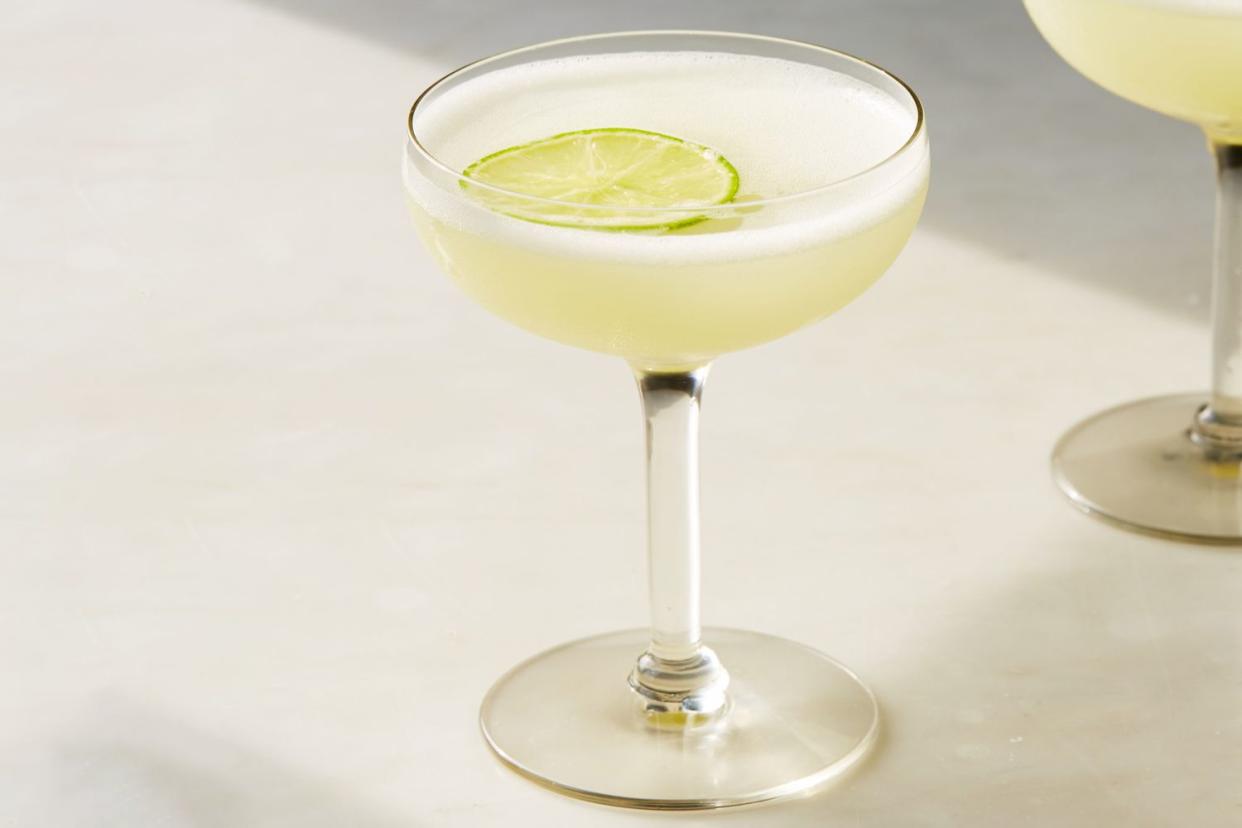How to Make a Daiquiri the Right Way—Using Just 3 Ingredients

Bryan Gardner
Those hurricane glasses full of pink frozen concoctions that you had on spring break way back when? They may have been called a daiquiri, but they're just echoes of the combination that started it all. A true daiquiri is delightful and refreshing thanks to its simplicity: Rum, fresh lime juice, sugar—that's it.
"It's so damn simple, and yet when properly made, it never fails to satisfy," says daiquiri devotee and veteran bartender, Joaquin Simo. "There's nowhere to hide with a daiquiri. It's either perfectly balanced and brutally cold, or not. I love that honesty about it." If any part of it is off, he adds, the drink doesn't work. So it's important to consider each ingredient carefully.
"The daiquiri is the omelet of bartending," says Simo. "It has the simplest and, often, cheapest ingredients available, transformed via exacting proportions and well-honed technique into something sublime."
Excellent advice. With that in mind, let's dive right into this rum-centric classic.
Related: Why a Martini Should Always Be Stirred, Never Shaken
Head to Cuba for the Daiquiri's origins
The Daiquiri hails from Cuba, where the juice of pressed sugar cane flows and limes grow in abundance. According to the Oxford Companion to Cocktails, it was a man named Jennings Stockton Cox, Jr. who is credited as the first person to mix one up and make people take notice, even though the combination of the three basic ingredients were all but guaranteed to have been in action long before that 1896 date. But it wasn't until 1908 that it finally got its name, or at least a longer version of it, from the bartender at the San Carlos Club who tapered Cox's large-format version, dubbing it Ron a la Daiquiri.
Since then, remaining true to the original footprint yields the best results. For Simo, that is:
2 ounces white rum
3/4 ounces fresh lime juice
3/4 ounces simple syrup
"That's a beautifully balanced daiquiri that will knock the socks off of someone who remembers drinking them on Bourbon Street," he says. "It's bone dry, which makes it both enormously refreshing and eminently quaffable. On a hot day, that spec is basically air conditioning in a glass."
Tips for Making the Perfect Daiquiri
Fresh Juice Is a Must
When making any cocktail that requires citrus juice, fresh is always best (and, likely, the least expensive option). It's also important to squeeze-to-order. "Freshly squeezed lime juice is a must, as it gets bitter and acrid even after a day," says Simo. Washing your citrus, too, is a good practice—remember, it's likely traveled far before reaching your grocery store.
Match Your Rum to the Season and Your Sweetener
"I prefer to drink white rums in the dead of summer, but prefer aged rums in the fall and winter," says Simo. A daiquiri in the winter? "That is when citrus season is at its peak, so you should absolutely be drinking daiquiris in January and February," he says. "It's way cheaper than a flight to the Caribbean, and just as transportive."
For your sweetener, consider the style of rum you're using and pair your sugar accordingly. Simo says that a light-bodied white rum made from molasses is best served by matching it to a simple syrup made with white sugar. But if you're using rhum agricole—that is, rum made from the fresh-pressed juice of the cane, not the molasses by-product—opt for a less refined syrup made from cane sugar. "Save the rich demerara syrup for aged rums, where those dark caramel flavors echo the confectionary notes imparted by oak barrel aging," says Simo.
Don't Be Garish With Your Garnish
Typically, a daiquiri is not garnished, but a slim swathe of lime peel is perfectly acceptable. Simo advises that you keep it simple. A big wagon-wheel-notched lime slice or floating lime wheel? "Superfluous at best; it rarely adds anything substantively aromatic and often drowns out the subtle rum aromatics," he says. And what about the latest trendy garnish, dehydrated fruits? "Completely useless, as it adds no aromatic component to the drink."
Always Serve It Icy Cold
While he was the proprietor of New York's Pouring Ribbons, Simo and his crew always aimed to have the drink placed in front of a daiquiri-ordering guest as quickly as possible, aiming for a ceiling of 30 seconds after being strained. Why? It just tastes best cold. Remember, it was invented in a hot climate; it's meant to be ultimately chilly in nature.
"We would often build the drink in the tin and shake it tableside, just to ensure the guest could get that first sip while the bubbles on top were still frothy and energetic," he says.

